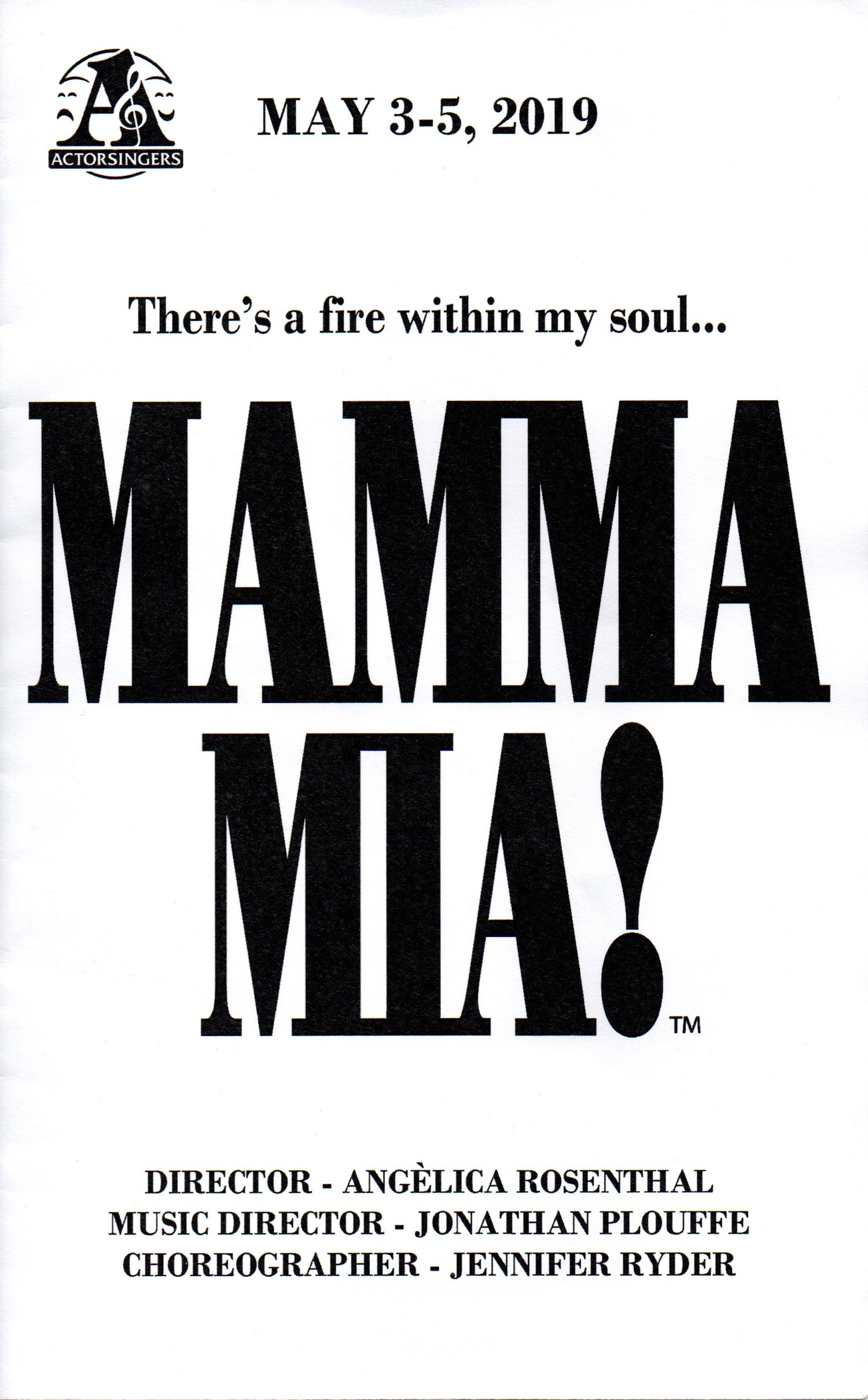Review: Celebrating Big with MAMMA MIA at Actorsingers

There's no better way to close out a season than with a celebration; and there's no better way to celebrate than with a wedding! Directed by Angèlica Rosenthal, Mamma Mia was a celebration like no other. The classic story of a young woman destined to be wed, desiring her father to give her away despite not knowing who he was, and inviting the three potential fathers to her wedding- all of it set to the tunes of ABBA- requires a lot of collaboration between the many facets of theater that make these musicals so celebratory, and Actorsingers did an exquisite job marrying those facets together to form one cohesive experience! Creating cohesion between lights, sound, set, music, and choreography is a difficult task to undertake without the right people for the jobs.
To begin at the beginning, when building from the ground up, the first components to arise are the lighting and set designs, designed by Tyler Soucy and Kelsey Rae Marot, respectively, and the two tend to fall hand in hand. The set of Mamma Mia was sprawling- a two story building with stairs stage left, a wall and archway upstage center, and a single story façade that rotates into a bedroom stage right- and that creates a particularly tricky scenario for lights: Lighting's first purpose is to make sure the actors are seen, so the more complicated the set, the harder it is to light. However, not once did I notice an actor that was supposed to be lit being hindered by the set. On top of that, the lighting had enough zones of cover that the whole stage would light up with vibrant colors during the many dance breaks throughout the show. A space, however, is only as useful as how the space is used. Rosenthal used the space she had smartly, allowing to play with their surroundings to add layers and distance. Freedom can come at a cost, though, as a few actors tended to drift in place or shift their weight from side to side that grew more distracting as scenes went on, especially if they were the center of focus of the scene.
Once the technical aspects are situated, music and choreography step in to liven up the party. Jonathan Plouffe, the musical director, and Jennifer Ryder, the choreographer, had the delightful challenge of bringing ABBA's music to life and make it visually appealing. Ryder's choreography didn't shy away from intensity and the featured dancers really had to step up to the plate and make it look effortless. The way that percussive and rhythmic patterns were built into the choreography to line up with the music was captivating and really got the audience into it; from the clang of putting down cups, or the scratching of chairs, to the making of drinks, the choreography felt married to the music which only got the audience more excited. The only thing that pulled my focus was some of the faces of the cast as they danced: In a dance number full of lights, movement, and sound, a blank face or a face full of fear as they are trying to remember the steps sticks out like a sore thumb, and many sore thumbs were spotted throughout the show. As with most musicals, one more week dedicated to choreography could have helped push the collective experience up a tiny degree. I will say this, if a couple blank faces were the most glaring detail for a trained eye in a cast of a majority non-professional dancers, then something was definitely done right.
The final part to creating a cohesive celebration is commitment. All parties involved must be present and focused and committed, and this cast had an admirable commitment rate. Whether it be a continuous stream of energy and excitement from Sophie, played by Sarah Wenrich, the mental focus of holding an accent consistently like Harry and Bill, played by Andrew Gibson and Tim Lord respectively, or just putting your body out there unashamedly like Eddie, played by Colin Malette, total focus and commitment can go a long way. On the other hand, total commitment isn't easy. With such an emotional role as Donna Sheridan, played adoringly by Jennifer Sue Rockwell, sometimes you lose focus for half a second and the energy drops; the important thing is that those moments are short lived, and Rockwell push through those beats and got it back like a Super Trouper! Commitment can get even harder when you have to do things very few other actors around you do as well. In the case of Pepper, played exuberantly by Larry Watson, with having to attempt to seduce another character who clearly is not interested, such as in Does Your Mother Know?, being the only character fawning and bending and sexually flinging yourself around the stage can cause the body to stiffen, making it that much harder to move. For every bend and snap filled with innuendo, there was a shimmy that needed to loosen up; but again, if too much tension in the shoulders is only negative, then there must have been a lot of positives.
Theater is live and people are live and bodies are live. They won't always cooperate, they won't always move perfectly, and you won't always be in control. But if you trust in what you can control and leave the rest on stage, you'll earn the standing O, the thunderous applause, and the raining balloons and confetti that marks the end of a high quality celebration.
Reader Reviews

Videos

